한식 읽기 좋은 날
Vol 50. Korean Food, The Culture Blooms
Coveting Korean Food Presented in Beautiful Colors
Joy of Korean Food
Hansik(Korean food) is not a food that satisfies hunger, but is essentially a food culture that contains the logic and philosophy of nature. Korean food, symbolized by obangsaek(the five colors), is recognized as something uniquely Korean with its long history.
However, there are some parts that are difficult to understand especially for those who do not know or who are not familiar with our culture. When we describe Korean food, we often describe its diversity and health benefits, but it is not easy to know its reason and ideological basis. Thus, we will look into it by using the five colors in an easy-to-understand manner.
Source. Rural Development Administration Nongsaro(Agricultural technology portal), Korean Food Promotion Institution, Korea Craft & Design Foundation
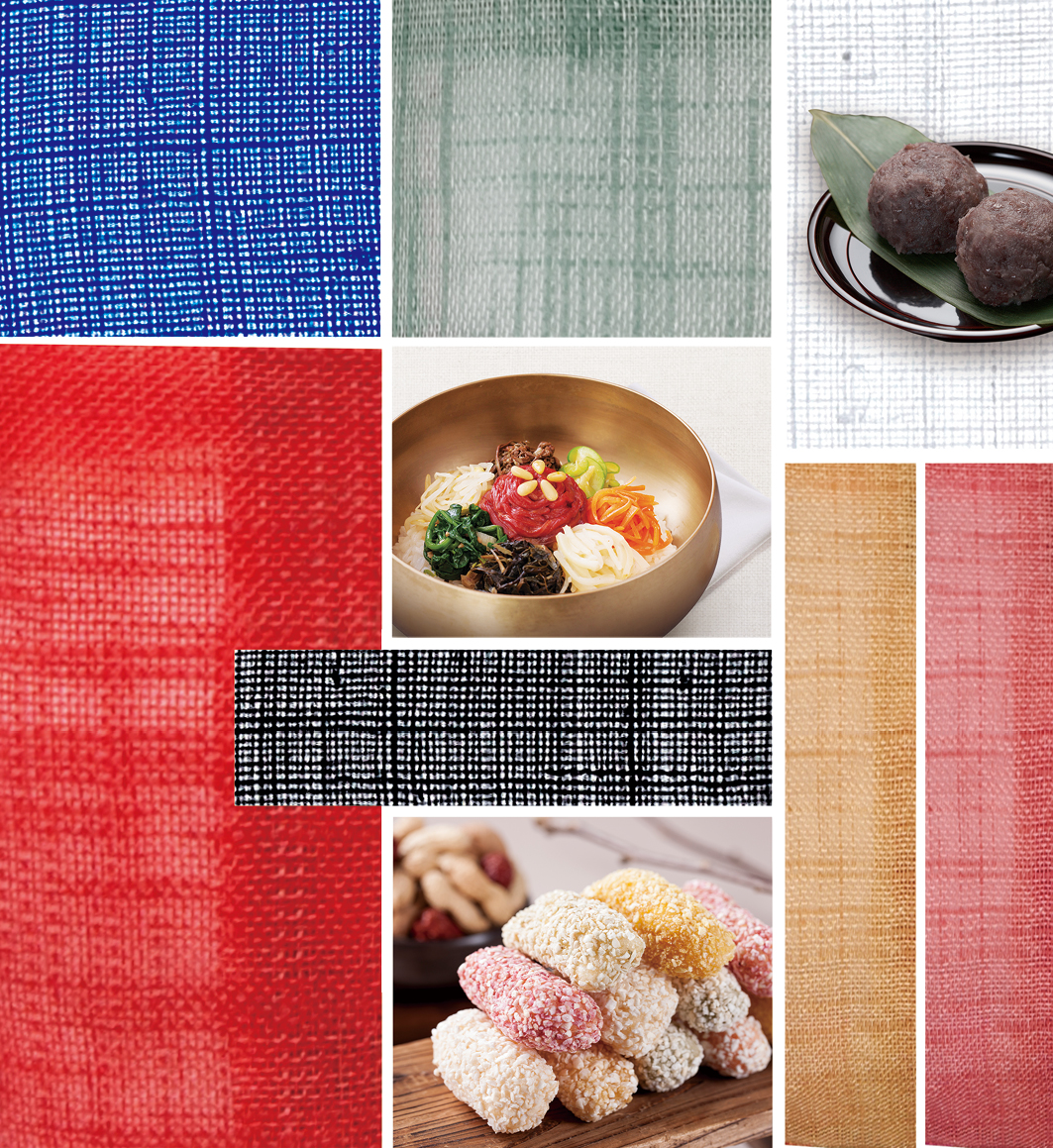
Color implies the historical and life characteristics of a nation and its people. France, the country of fashion, has three colors: blue, white, and red. China, the country of dragons, is known for its red color, while our country has the harmony of five colors: red, blue, white, black, and yellow. We call these five colors: obangsaek.
Our ancestors classified food ingredients into five colors, and believed in making and eating them by harmonizing the colors evenly to control the mind, and keep the internal organs healthy. If you look at japchae(stir-fried glass noodles and vegetables) or gujeolpan(platter of nine delicacies), you can see that the ingredients are evenly presented in five colors. Even white dishes, such as guksu(noodles) and tteokguk(sliced rice cake soup), are served with a garnish to represent the five colors. Perhaps, it is like the words of our ancestors about not being a picky eater and eating a nutritionally balanced diet. The five colors play a major role not only in food, but also in the clothing culture. Obangjang durumagi, which our ancestors put on children on New Year’s Eve, contained the wishes of health, longevity, and prosperity, and the blue and red bojagi(wrapping cloth), yeonjigonji(wedding rouge), and black honseoji
(a letter of marriage) presented during weddings contain the wish for peace and prosperity of the newlyweds.
The Root of Korean Food Found
in Obangsaek
The obangsaek of our people, which has penetrated our life history deeply for a long time as a unique ideological basis, is called umyang-ohhaeng(the yin and yang and five elements). In the Korean food culture, which has been continuing for thousands of years, the dishes made with natural ingredients that were born and grown in this land represent the five directions(namely, the four directions and the center) with each one represented by a color, and are arranged to benefit the human body.
The five colors represent not only the colors in the yin and yang and the five elements, but also the directions, energy, and seasons. Black symbolizes wisdom and death(regeneration), while white symbolizes truth, purity, and nature. Red means birth, passion, and affection, and blue means life, creation, and wish. Yellow means the four seasons and the center. Our ancestors selected ingredients through this classification, and the meaning of each color is summarized as follows.
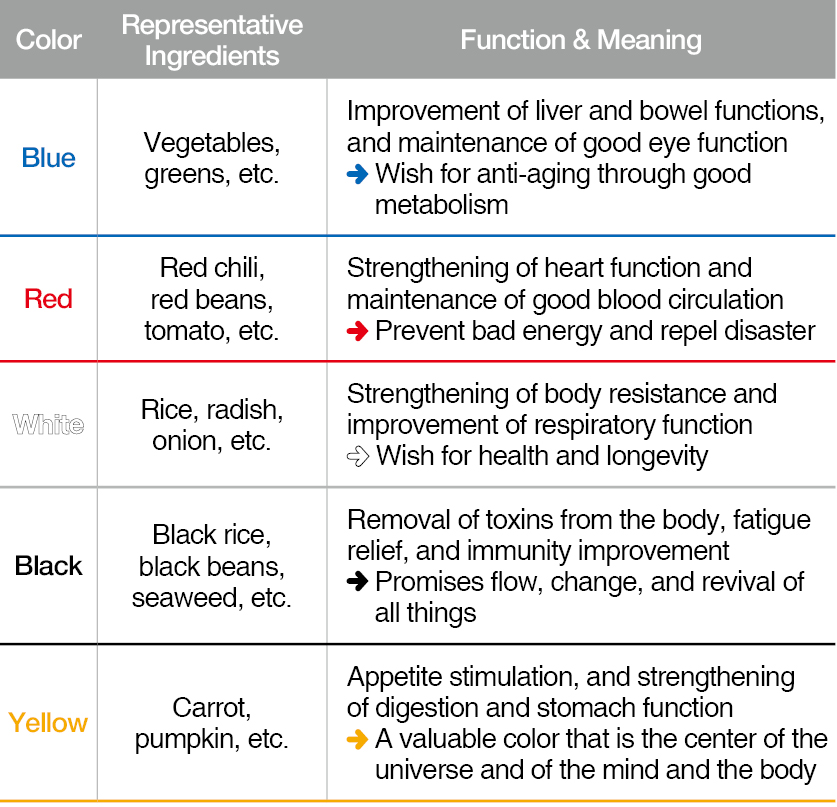
These ingredients have been considered familiar for a long time, and our ancestors maintained their health by eating ingredients with different functions evenly. This is comparable to the modern “color food.” Moreover, they established a food culture based on the unique idea of tying the yin and yang and the five elements according to color. For example, they expressed their desire to conform to the yin and yang and the five elements, such as putting a five-color garnish on tteokguk or guksu, or adding colorful garnishes on gujeolpan. In bibimbap, which everyone enjoys, the egg yolk is placed in the center, and blue, red, white, and black namuls(seasoned vegetable dishes) representing the four directions are placed around it to be eaten after mixing them together, wishing for the health of the eater. In the case of sinseollo(royal hot pot), the ingredients representing obangsaek, such as manna lichens, walnuts, maidenhair tree nuts, chestnuts, pine-nut kernels, and threaded red chili, were placed in a soup bowl, and a broth was added and then boiled, symbolizing the energy of the yin and yang and the five elements.
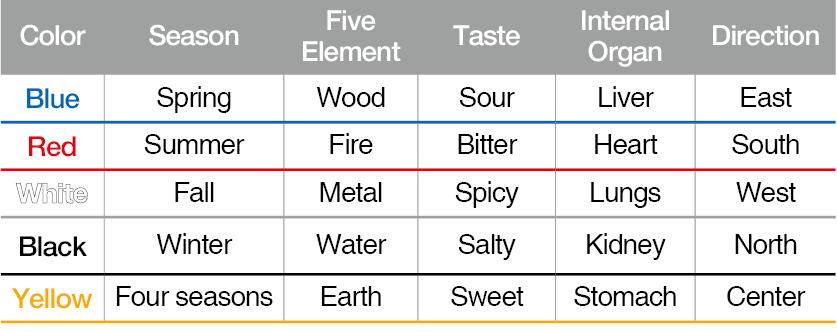
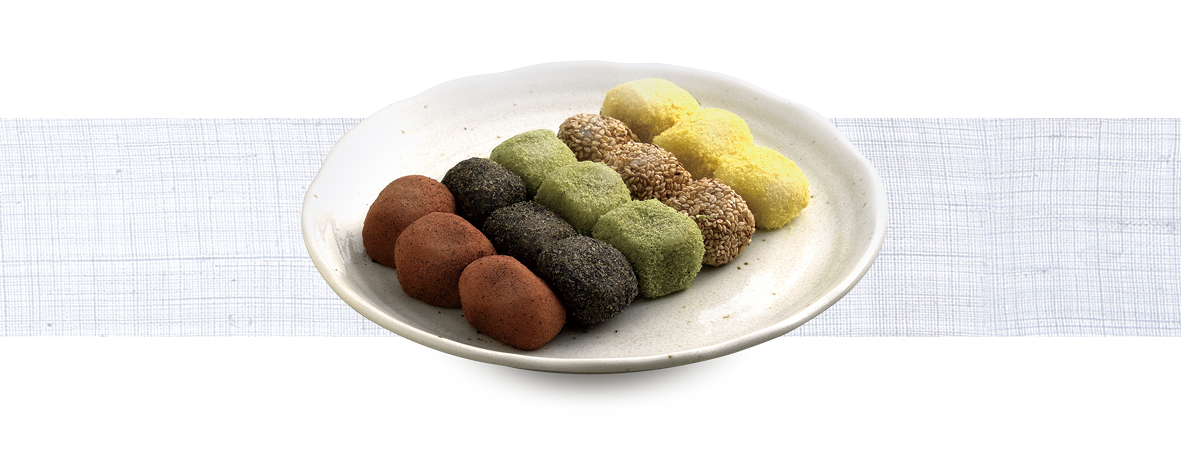
Food and Colors that
are Newly Highlighted Now
Color not only serves as a visual image, but it also has a function of influencing human emotions through association. It is to give meaning to a specific color through association, and the feeling it gives. For example, white means surrender and peace, red means love, and so on.
In the contemporary diet, color has evolved from being used simply for designing good-looking dishes to a form that combines nutritional features and functions. By paying attention to the “phytochemicals” found in the color of plants, we started paying attention to the health of natural colors. Phytochemicals are natural substances in plants that have antioxidant, anti-inflammatory, and detoxifying properties. It is easy to understand if you remember the black food, green food, and yellow food that were once popular. It has been widely advertised that when you have such a diet, you can prevent terminal diseases, such as adult lifestyle diseases and cancer.
At the moment, food is developing from the level of being something to eat to the level of enjoyment and in feeling the five senses. This is a trend not only in Korea, but also around the world. Thinking about this, we cannot help but be impressed with our ancestors, who practiced and internalized color food earlier, so it is necessary to change the perception that Korean food is a comprehensive art and an advanced culture that achieves overall harmony with diverse ingredients and their own unique taste. We have been adapting to nature and maintaining our health by consuming foods with different properties of obangsaek. Now, we look forward to creating a story that combines our own history, culture, and philosophy through color, and exerting efforts to succeed and disseminate the Korean food culture based on it.
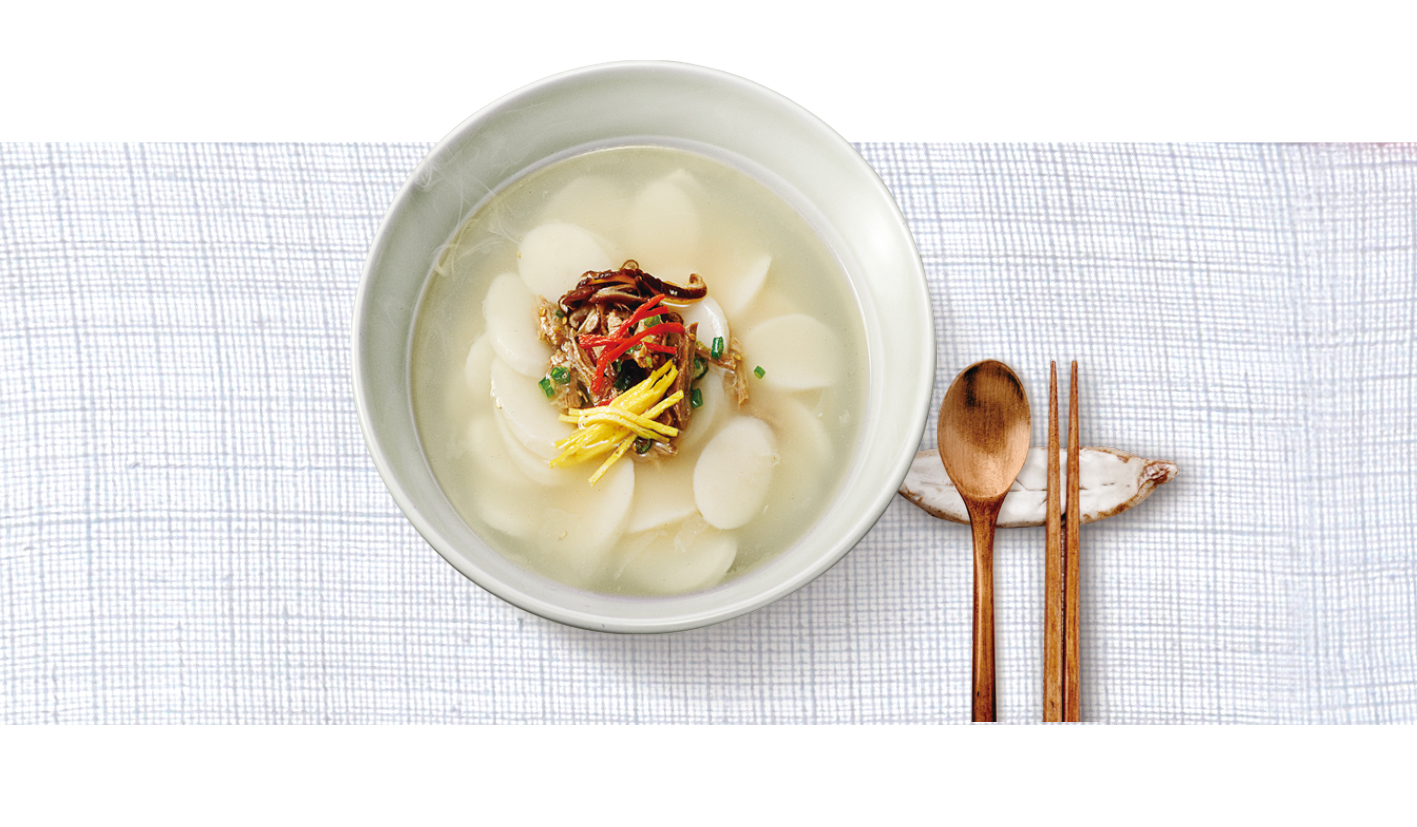

 한국어
한국어
 English
English






